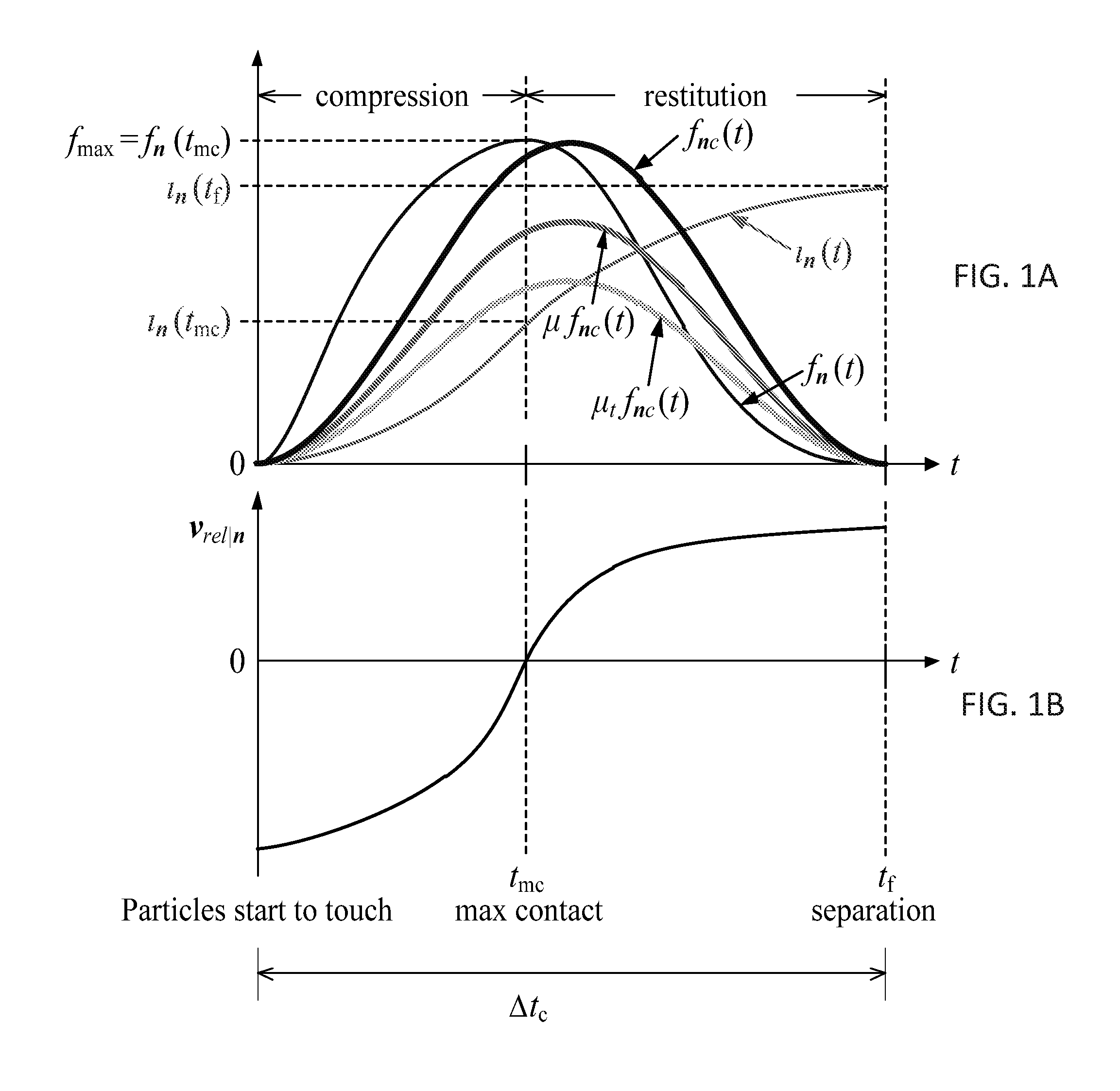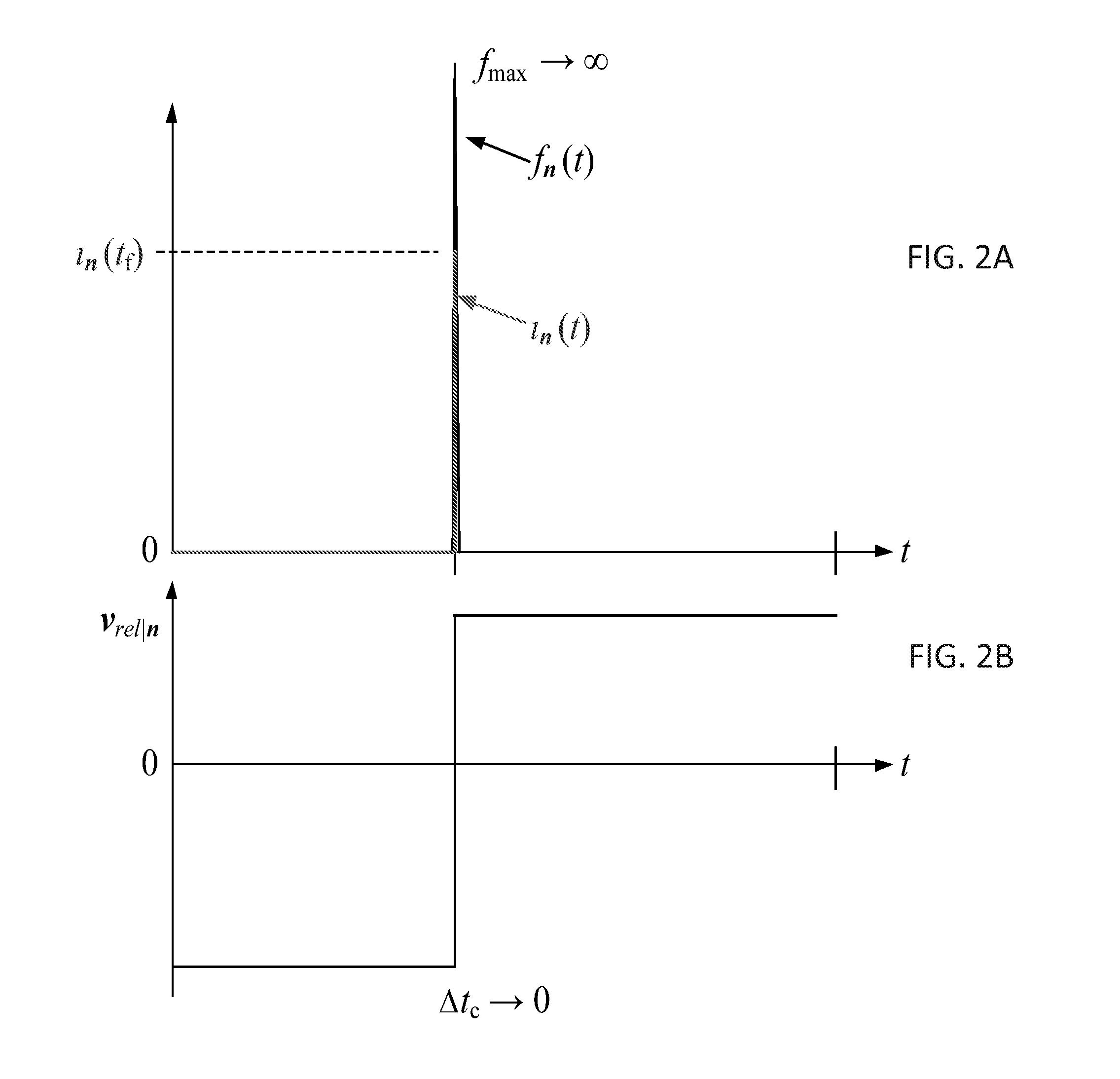Collision impulse derived discrete element contact force determination engine, method, software and system
a discrete element and contact force technology, applied in the field of physics based simulation engines, can solve the problems of complex contact force modeling/simulation, complex granular material modeling, and dem remains a computationally expensive numerical method when applied to simula
- Summary
- Abstract
- Description
- Claims
- Application Information
AI Technical Summary
Benefits of technology
Problems solved by technology
Method used
Image
Examples
Embodiment Construction
[0044]The invention provides collision impulse derived contact force determination methods, software and systems. A collision impulse derived contact force determination engine of the invention provides contact force with plausible levels of engineering accuracy, while retaining speed advantages of the collision impulse-velocity based class of engines. A collision impulse derived contact force engine of the invention can simulate a multi-body system at speeds that meet current collision impulse-velocity engines without sacrificing of the higher-order engineering detail that is characteristic of contact force-acceleration engines.
[0045]A preferred collision impulse derived contact force determination engine uses the 1st order time integration of motion, and calculates collision impulse, while directly handling the velocity. The approach allows the use of large time steps with numerical stability. Higher-order engineering details lost during the time integration are recovered via admi...
PUM
 Login to View More
Login to View More Abstract
Description
Claims
Application Information
 Login to View More
Login to View More - R&D
- Intellectual Property
- Life Sciences
- Materials
- Tech Scout
- Unparalleled Data Quality
- Higher Quality Content
- 60% Fewer Hallucinations
Browse by: Latest US Patents, China's latest patents, Technical Efficacy Thesaurus, Application Domain, Technology Topic, Popular Technical Reports.
© 2025 PatSnap. All rights reserved.Legal|Privacy policy|Modern Slavery Act Transparency Statement|Sitemap|About US| Contact US: help@patsnap.com



